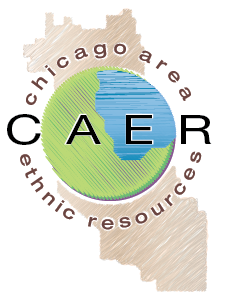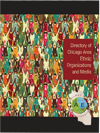-
Ethnic Voices, American Stories
personal essays written by nine Chicagoans
of various ethnic backgrounds 
Between two worlds By Alexander Rimas Domanskis
Throughout life we choose what we do as individuals and as members of a community. In Chicago, I live in the broader metropolitan community and in the vibrant Lithuanian American community as well.
Read more...
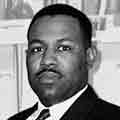
Half empty or half full By Derrick K. Baker
After more than three decades of calling Chicago home (save four years in Iowa at college), Iʼve become totally enamored with, and publicly proud of, the nationʼs third largest city. It is gorgeous, historic, vibrant, cultural, diverse and wealthy. If youʼre going to reside in one of the major cities, Chicago is a good choice.
Read more...

Where are all the people? By Cecilia Rubalcava
I began my life in America when I was but three months old. My parents, Jesus and Teresa, decided to move our family (which included my brother Jesse, 3, and my sister Claudia, 1) from Mexico to America. They had hoped to work in the United States and save up enough money to start a small business in their hometown of Aguascalientes. Their stay was to be temporary. But two years into it, my brother Omar was born and my father found a good job as a machine operator, which postponed our plans to return to Mexico.
Read more...
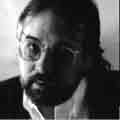
The people next store By Fred L. Gardaphe
Between 1920 and 1950, the number of Italians immigrating to the United States diminished each year. No longer were Italians leaving their homeland by the thousands. Living conditions in Italy had greatly improved since the late 19th century; the U.S. government was limiting the number of people who could immigrate to America from any one country; and Mussolini prohibited it. However, the end of World War II brought a new wave of Italian immigration, and these immigrants would change the definition of Italian America.
Read more...
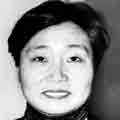
The 1.5 generation By Jae Choi
I am a 1.5 generation Korean American. No one knows quite where or when that terminology was coined, but we use it as if the whole world knows what it means. The 1.5 generation refers to Korean Americans who were born in Korea but educated mostly in the United States. We came as little children to this country, holding our parentsʼ hands, and adopted America as our own.
Read more...

I am who I am By Moin “Moon” Khan
It was on a late September afternoon that I first encountered my identity crisis in the United States. Deplaning from a flight from New York, I was at the Atlanta airport where I asked a person how to get to the University of Georgia campus and how long it would take. A well-mannered and cooperative person, James Howard, gave me a detailed description of the university and its Bull Dogs football team. First of all, I got mixed up between football and soccer. After all, this was my first day in this country, and while preparing for GRE and TOEFL exams, I had learned many new American words, like “mall,” “condominium,” etc., but I never imagined Americans would be so innovative that they would change the name of the most famous world sport.
Read more...
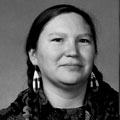
My Grandmother's Grandmother By Rosalyn LaPier
My Blackfeet name is K-tia-i-tse-kus, or Not Real Beaver Women. It is the name of my grandmotherʼs grandmother. I come from two very large families. My mother is Blackfeet, from Montana and Alberta, Canada. My father is Chippewa, from North Dakota/Manitoba. His family moved to Montana 150 years ago. On both sides, I have relatives in both Canada and the U.S.
Read more...

Titus and me By Natalie Pardo
“Youʼre not from Chicago, are you?” If Iʼd collected a dollar every time I was asked that question, Iʼd be a rich Haitian American by now. Born on American soil in 1963 and a resident of Chicago since 1966, I am happy to report that the assimilation process is still not complete. And my tongue desperately hangs on to an ever-fading French accent.
Read more...

Metamorphosis By Ngoan Le
I was born in South Vietnam after my family fled from the North, following the installation of the communist government in Hanoi. As a child growing up in an extended family, comprising my grandmother (the matriarch), aunts, uncles and many cousins in addition to my own immediate family of six, I did not know we stayed together and shared cramped quarters because we were refugees with limited resources.
Read more...
-
Major Immigration Laws
Naturalization Act of 1790.Limited citizenship to “free white persons” who had been in the U.S. two years. Allowed unrestricted entry of Europeans.
Alien and Sedition Acts (1798).President could expel alien enemy males suspected of treason.
Chinese Exclusion Act (1882).Denied entry to Chinese laborers; those already here were denied citizenship.
Quota Law of 1921.Limited any nationality to 3% of foreign-born living in U.S. in 1920 (about 350,000/year, mostly from Northern and Western Europe). Professionals and domestic servants exempt.
National Origins Law (1924).For five years 2% could come based on nationalities here in 1890. Greeks, Italians and Eastern Europeans, who had come later, were severely restricted. Also denied entry to those unable to become citizens, such as Chinese. Repealed in 1960s.
Act of April 1943.Permitted temporary agricultural workers from Western Hemisphere during WWII. Later extended to 1947, became basis for Mexican bracero program, which lasted to 1965.
Act of December 1943.Repealed Chinese Exclusion Act and set quota of 105 per year.
Act of 1944.Permitted temporary alien workers to help in war-effort industries and services, leading to agreements with British Honduras, Jamaica, Barbados and British West Indies.
Act of June 1946.Allowed Indians and Filipinos to come under quotas and made them eligible for citizenship.
Displaced Persons Act (1948).First U.S. policy admitting people fleeing persecution. Allowed up to 205,000 people, during two-year period, who were displaced by WWII in Europe.
Agricultural Act of 1949.Facilitated entry of seasonal farm workers to meet labor shortage. Extended bracero program.
Act of 1951.Provided framework for bracero program, setting up reception centers to provide transportation, sustenance and medical care, guaranteeing employers would pay prevailing wage and provide free housing.
Immigration & Naturalization Act of 1952(McCarran-Walter). Held immigration to 1920 levels. Made all races eligible for citizenship and eliminated gender discrimination for immigrants. Gave preference to skilled workers needed here and relatives of U.S. citizens and aliens. Allowed 100 minimum from each country and set ceiling of 2,000 for total Asian-Pacific triangle.
Refugee Relief Act of 1953.Established new category, people persecuted for political beliefs. Helped those fleeing communism, like Cubans and Hungarians.
Act of 1961.Eliminated 2,000 quota for Asian-Pacific triangle. Ensured 100 minimum quota for newly independent countries. Removed information about race and ethnic origin from visa applications.
Act of 1961.Eliminated 2,000 quota for Asian-Pacific triangle. Ensured minimum quota.
Act of 1962.Granted non-quota visas to brothers, sisters and children of citizens and to those with special occupational skills.
Immigration Act of 1965.Stopped use of 1890 Census as basis for entry. Set 20,000 annual limit from any nation, eliminating nationality, race or ancestry as basis for immigration. Families of U.S. citizens had priority. Professionals and skilled workers, most of whom came from Asia, also had preference. Spouses, children and parents of U.S. citizens were exempt from quota, as were some clergy, some medical graduates and some of those who had worked for U.S. government abroad. Set limit of 170,000 for East Hemisphere; for first time West Hemisphere was not exempt from quotas (120,000 limit), but preference categories and 20,000/country quota didnʼt apply to West. The bracero program that let migrants go back and forth to Mexico was ended, but hiring of undocumented without penalty was allowed. Said immigrant workers should not replace U.S. workers or adversely affect wages and working conditions.
Indochina Migration and Refugee Assistance Act 1975.Established resettlement program for Cambodians and Vietnamese. (Laotians added in 1976.)
Immigration and Naturalization Act Amendments of 1976.Applied 20,000-per-country limit and preference system to Western Hemisphere. Exempted Cubans already in U.S.
Act of 1978.
from quota.Combined quotas for East and West Hemispheres into one worldwide limit of 290,000.
Refugee Act of 1980.Set worldwide ceiling of 270,000, exclusive of refugees. Established comprehensive program for resettling refugees.
Immigration Reform and Control Act of 1986.(Simpson-Mazzoli) Gave amnesty to undocumented who had come before 1982. Set sanctions for employees knowingly hiring illegal aliens. Increased border enforcement.
Immigration Act of 1990.Increased total immigration, to 675,000 annually, consisting of 480,000 family-sponsored and 140,000 employee-based immigrants, plus another 55,000 from a new “diversity lottery.” The latter was for those not able to come in large numbers under other quotas and preferences. About one-third went to Europeans, largely Irish already here but undocumented. Allowed for 4,800 people who would invest $1 million each in the U.S.
Welfare Overhaul Act of 1996.Denied benefits such as food stamps, welfare and Supplemental Security Income to legal immigrants who are not U.S. citizens.
Illegal Reform and Immigration Responsibility Act of 1996.Expanded reasons for blocking or deporting immigrants, expedited removal, gave judges less leeway in reviewing immigration cases. Let some who had been denied asylum become legal residents, including about 300,000 from Central America.
American Competitiveness and Workforce Immigration Act of 1998.Increase the number of skilled temporary workers U.S. employers could bring in.
Legal Immigrant Family Equity (LIFE) Act of 2000.Allowed some undocumented spouses and children of legal immigrants to enter or, if here, work while awaiting a visa.
The USA Patriot Act of 2001.Broadened the terrorism grounds for denying immigrants and increased monitoring of foreign students.
Homeland Security Act of 2002.Created Dept. of Homeland Security. Among other things it split the Dept. of Immigration and Naturalization (INS) into U.S. Immigration and Customs Enforcement (ICE) and U.S. Customs and Border Protection. Also it mandated electronic data system and sharing of information on would-be immigrants as well as entrance and exit of immigrants.
Real ID Act of 2005.Expanded terrorism-related grounds for admission and deportation, improved border security, and said states must verify legal residency for drivers licenses and non-driver IDs.
Secure Fence Act of 2006.Mandated construction of hundred of miles of fence along the border with Mexico and use of more advanced technology like cameras and unmanned area vehicles to reinforce boarder security.
Deferred Act for Childhood Arrivals of 2012.Presidential order that enabled up to 2 million young people brought to the U.S. as children by undocumented parents to remain and work legally.
Top
